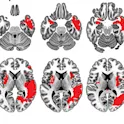
Neuroscience
17 Feb 2017
Alcohol and problems remembering: can caffeine help?
Recent study challenges the view that the negative side effects of these drugs can be cancelled out when they are taken together

Neuroscience
17 Feb 2017
Recent study challenges the view that the negative side effects of these drugs can be cancelled out when they are taken together

Neuroscience
13 Feb 2017
Recent study shows prebiotic fibers can help to protect beneficial gut bacteria and restore healthy sleep patterns after a stressful event.

Neuroscience
10 Feb 2017
Interview discusses aspirations for Frontiers in Synaptic Neuroscience and a vision for the field.

Neuroscience
10 Feb 2017
This case report documents the extraordinary resilience of a woman in Argentina who endured multiple strokes.

Neuroscience
30 Jan 2017
Study shows that junk-food is habit-forming in rats – but that the habit could easily be broken by pairing it with the right environmental cues.

Neuroscience
13 Dec 2016
Engaging in voluntary physical exercise helps protect the brain from the damaging effects of a stroke, shown in mice. — By Tania Fitzgeorge-Balfour, Science Writer, Frontiersin.org The after-effects of a stroke can be life changing. Paralysis, speech problems and memory loss occur in varying degrees of severity, depending on the location and amount of brain tissue damage. How far a stroke patient can recover is largely determined by the ability of the brain to reorganize itself. Understanding what can improve this ability is therefore essential in developing the best therapies for rehabilitation. Voluntary physical exercise is known to have a positive effect on a person’s overall well-being. It delays memory loss in old age and improves cognitive ability. A new study, published in the open-access journal Frontiers in Aging Neuroscience, has linked the positive effects of exercise on the brains of mice to their better recovery after a stroke. “Our study suggests that physical exercise can be used as a preventive, as well as a therapeutic approach to aid recovery after a cortical stroke,” says Dr. Evgenia Kalogeraki, who conducted this research at the in the laboratory of Prof. Dr. Siegrid Löwel, at Georg-August-University, Germany. Previous research of the Löwel […]

Neuroscience
12 Dec 2016
Researchers show a molecular mechanism that regulates memory specificity over time, and point to how understanding memory in honeybees could help us combat degenerative brain diseases

Neuroscience
05 Dec 2016
Research suggests feedback loop between greater executive function and healthy behavior

Neuroscience
29 Nov 2016
Sleep deprivation affects children’s brains differently than adults’, according to a new study By K.E.D. Coan, Science Writer Any parent can tell you about the consequences of their child not getting enough sleep. But there is far less known about the details of how sleep deprivation affects children’s brains and what this means for early brain development. “The process of sleep may be involved in brain ‘wiring’ in childhood and thus affect brain maturation,” explains Salome Kurth, first author of the study published in Frontiers in Human Neuroscience, and a researcher at the University Hospital of Zurich. “This research shows an increase in sleep need in posterior brain regions in children.” This contrasts with what researchers know about the effects of sleep deprivation in adults, where the effect is typically concentrated in the frontal regions of the brain. After staying up too late, both children and adults need a period of deep sleep to recover. This recovery phase is characterized by an increase in an electrical pattern called slow-wave activity, which can be measured with a non-invasive technique called an electroencephalogram. With a large number of electrode channels distributed across the scalp, this method also detects which brain regions show […]

Neuroscience
16 Nov 2016
Study shows vocal communication in mice is affected by the same gene needed for speech in humans

Neuroscience
04 Nov 2016
By Ian Salter, Frontiers Science Writer The use of robotic tutors in primary school classrooms is one step closer according to research recently published in the open access journal Frontiers in Computational Neuroscience. Dr Imbernòn Cuadrado and his co-workers at the Department of Artificial Intelligence in Madrid have developed an integrated computational architecture (ARTIE) for use with software applications in schools. “The main goal of our work was to design a system that can detect the emotional state of primary school children interacting with educational software and make pedagogic interventions with a robot tutor that can ultimately improve the learning experience,” says Luis Imbernòn Cuadrado. Online educational resources are becoming increasingly common in the classroom, although they have not taken into sufficient account that the learning ability of primary school children is particularly sensitive to their emotional state. This is perhaps where robot tutors can step in to assist teachers. Rather than focusing on specific emotions, the researchers first identified three cognitive states (concentrating, distracted and inactive) known to influence the course of learning. Keyboard strokes and mouse actions of children using educational software were used to predict which of these cognitive states the child is experiencing and subsequently linked […]

Neuroscience
26 Oct 2016
By Srividya Sundaresan, Science Writer Recent research shows brain-to-text device capable of decoding speech from brain signals Ever wonder what it would be like if a device could decode your thoughts into actual speech or written words? While this might enhance the capabilities of already existing speech interfaces with devices, it could be a potential game-changer for those with speech pathologies, and even more so for “locked-in” patients who lack any speech or motor function. “So instead of saying ‘Siri, what is the weather like today’ or ‘Ok Google, where can I go for lunch?’ I just imagine saying these things,” explains Christian Herff, author of a review recently published in the journal Frontiers in Human Neuroscience. While reading one’s thoughts might still belong to the realms of science fiction, scientists are already decoding speech from signals generated in our brains when we speak or listen to speech. In their review, Herff and co-author, Dr. Tanja Schultz, compare the pros and cons of using various brain imaging techniques to capture neural signals from the brain and then decode them to text. The technologies include functional MRI and near infrared imaging that can detect neural signals based on metabolic activity of […]

Neuroscience
25 Oct 2016
By Laura E. Perlini, Frontiers The first evidence of the capacity of the human being to conceive and manufacture an object that could replace a malfunctioning part of the body is dated between 1295 and 664 B.C. It is the “Greville Chester Great Toe”: a prosthetic toe made using linen, glue, and plaster. It was supposed to aid people who had lost their toe to walk or balance. From ancient Egyptian times, much progress has been made, and nowadays, we are able to make devices that replace or supplement the input and/or output of the nervous system and could ideally bypass neural deficits caused by a disease. This type of prosthesis is called “Neuroprosthesis.” In particular, “sensory neuroprostheses” are able to convert environmental stimuli into perceptions by capturing external inputs and translating them into appropriate stimuli (usually electrical) to the nervous system. The most representative success of sensory neuroprosthetics is the cochlear implant, used in rehabilitating neurosensory hearing loss. The success of cochlear implants has boosted the interest of the scientific community for sensory neuroprosthetics: the concept of using electrical stimulation to provide sensory input to the brain is now being investigated to restore all the five senses. Currently, […]

Neuroscience
07 Sep 2016
By Mark Wartenberg, Frontiers Science Writer Emotionally invested parents can mean children are more likely to be successful later in life, a study published in Frontiers in Human Neuroscience shows. Looking at 27 children aged between four and six, the study examined the quality of the emotional bond to their parents, and their cognitive control including: resisting temptation, their ability to remember things, and whether they are shy or withdrawn. Maximizing children’s chances of success can seem daunting and an impossibly tall order. This research found a caring and emotionally attentive environment is liable to be a long-term game-changer. The study involved a combination of questionnaires, behavioral tasks and electrophysiological measurements. The researchers looked at the quality of the emotional bond – referred to as emotional availability (EA) – between mothers and children. Second, the children’s executive functions were measured through a number of exercises. Finally, the study measured the neural responses of children who were tasked to inhibit certain aspects of their behavior. This was achieved through EEG (Electrotroencephalography) by measuring small variations in voltage in certain key parts of the brain. Dr Schneider-Hassloff, a researcher on the study, noted: “this study investigated the association between emotional interaction […]

Neuroscience
06 Sep 2016
by Conn Hastings, Frontiers Science Writer By relaxing flexed muscles in your foot, you can reduce the ability of your hands to respond to stimulation known as excitability, a study published in the open-access journal Frontiers in Human Neuroscience found. Although this result might sound bizarre, movement in one limb interfering with movement in another is something you have probably discovered yourself. Anyone who has ever tried to rub their head while patting their belly can confirm this – failing at that wasn’t your fault either, although it was pretty humorous. The muscles in your body contract to pull on your bones and relax to release them again, in response to neural impulses. This forms the basis of movement. However, coordinating both muscle contraction and relaxation is essential for normal physical activity. Rapidly switching between these states is particularly important in activities where complex movements are required, like sports or playing musical instruments. While the balance between muscle relaxation and contraction is important, they are distinct processes in their own right. Brain imaging studies show that specific areas of the brain activate during muscle relaxation, indicating that it is an independent and active neurological process, and not merely the end or […]
Get the latest research updates, subscribe to our newsletter